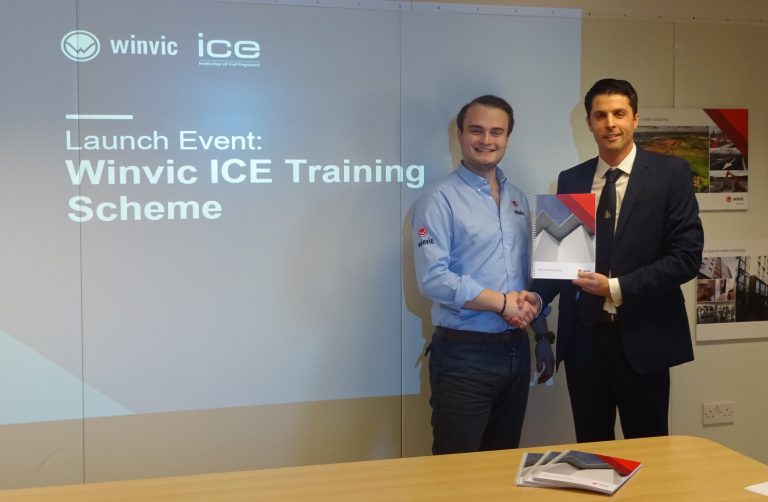Multidisciplinary main contractor, Winvic Construction Ltd, announced its partnership with the Institution of Civil Engineers (ICE) yesterday, to offer graduates a training programme in order to gain the specialist skills, knowledge and professional approach required to practice as a civil engineer. The ICE Training Scheme forms part of an employee’s 12 month initial professional development period, which bridges the gap between education and professional qualifications. The structured training will be delivered in-house by Winvic and this leads to sitting the EngTech (MICE) Professional Review as a stepping stone to onward progression to IEng or CEng status. The diverse and thorough framework is tailored in relation to the individual’s previous, and often very recent, education route, specialist discipline and desired future professional qualification. The Scheme’s content is overseen by ICE, ensuring quality and methods, in order to maintain the highest standards. Tim Reeve, Winvic Technical Director, commented: “We have always taken the personal and professional development of our employees very seriously but with a significant increase in staff over the last few years we felt it was time to offer even more support. Our 93 percent staff retention rate indicates that the individuals who join our team after completing an Undergraduate or Master’s Degree are with us for a long time to come; it’s the people that make our business thrive and we owe it to them to help them be the best they can be.” Winvic will provide each trainee with a supervising civil engineer (SCE) and a delegated engineer (DE who will be experienced ICE Members; their roles will be to support and mentor, helping the individual to become multi-skilled, possess good technical, communication, commercial, people and legal knowledge, and understand the implications of their work across these areas. HR and Training Manager at Winvic, Rebecca Schwarz, added: “We are thrilled that ICE – such an important body within the global construction industry – sees our commitment for developing our employees, and that we have been chosen as a training partner. Educational qualifications contribute hugely in giving people the required competencies, but some things just can’t be taught in the classroom, as our year in industry students so often tell us. Winvic’s new ICE Training Scheme will help to create the next wave of innovative, first-class engineers that also share Winvic’s esteemed values.” Cath Mansell, Membership Manager, Mid England said, “It is great for ICE to see new companies implementing the ICE Training Scheme. I know that Winvic have been working hard with Ray Hulse, ICE Membership Development Officer, to get this off the ground and it shows an impressive focus on the professional development of their staff.” For more information about joining Winvic, please visit our Careers page, or contact the HR Department. Vacancies can also be found on LinkedIn and Twitter pages.






